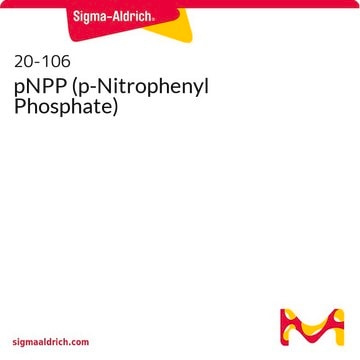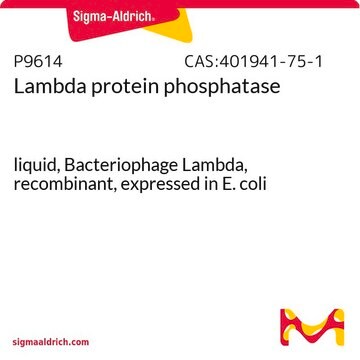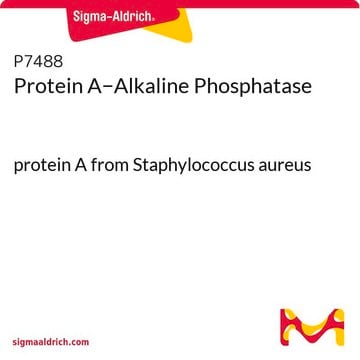P7937
Protein Phosphatase-1 Catalytic Subunit, α-Isoform from rabbit
5,000-15,000 units/mg protein, recombinant, expressed in E. coli, lyophilized powder
Sinónimos:
Protein phosphatase
About This Item
Productos recomendados
biological source
rabbit
Quality Level
recombinant
expressed in E. coli
assay
≥80% (GE)
form
lyophilized powder
specific activity
5,000-15,000 units/mg protein
mol wt
37.5 kDa
technique(s)
inhibition assay: suitable
UniProt accession no.
storage temp.
−20°C
Gene Information
rabbit ... PPP1CA(100009298)
General description
Application
Biochem/physiol Actions
Packaging
Unit Definition
Physical form
Inhibitor
Storage Class
11 - Combustible Solids
wgk_germany
WGK 3
flash_point_f
Not applicable
flash_point_c
Not applicable
ppe
Eyeshields, Gloves, type N95 (US)
Certificados de análisis (COA)
Busque Certificados de análisis (COA) introduciendo el número de lote del producto. Los números de lote se encuentran en la etiqueta del producto después de las palabras «Lot» o «Batch»
¿Ya tiene este producto?
Encuentre la documentación para los productos que ha comprado recientemente en la Biblioteca de documentos.
Los clientes también vieron
by its phosphorylation status in cultured cells of sycamore (Acer
pseudoplatanus)
Nuestro equipo de científicos tiene experiencia en todas las áreas de investigación: Ciencias de la vida, Ciencia de los materiales, Síntesis química, Cromatografía, Analítica y muchas otras.
Póngase en contacto con el Servicio técnico










